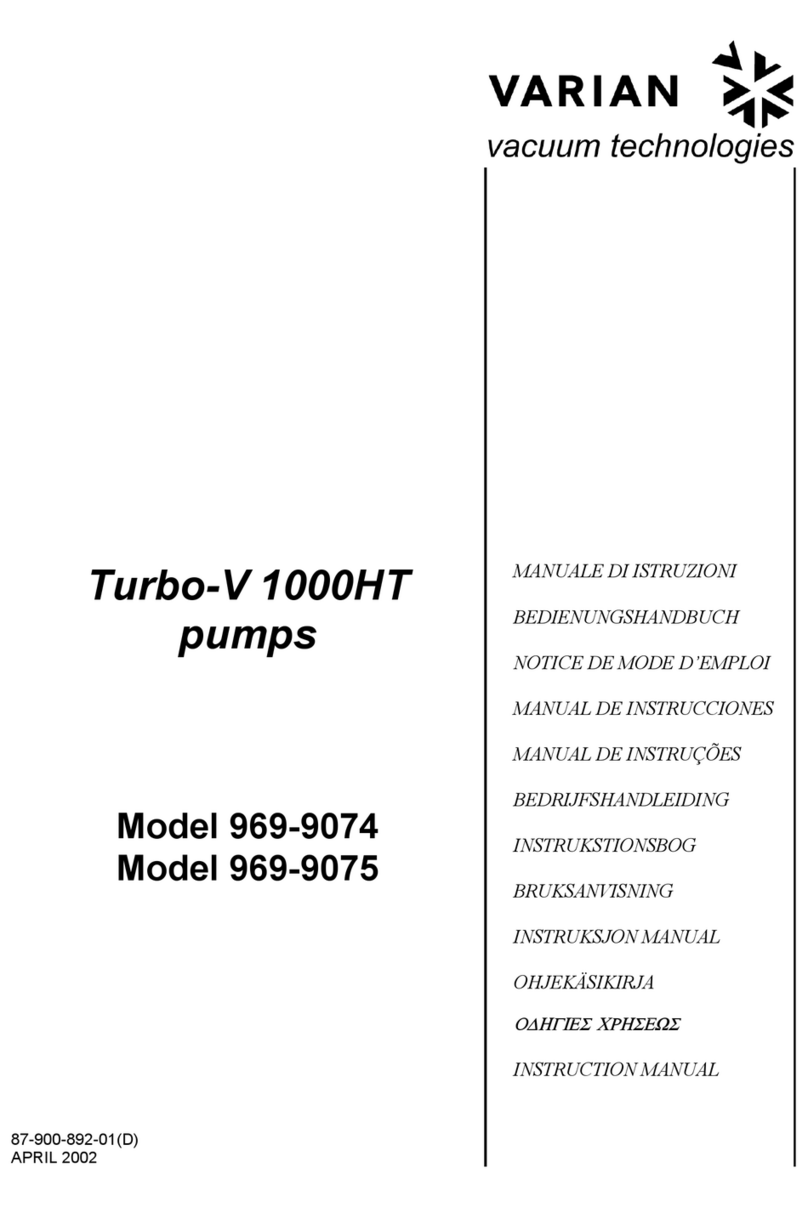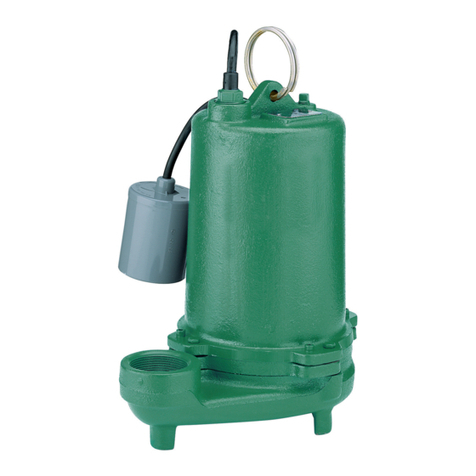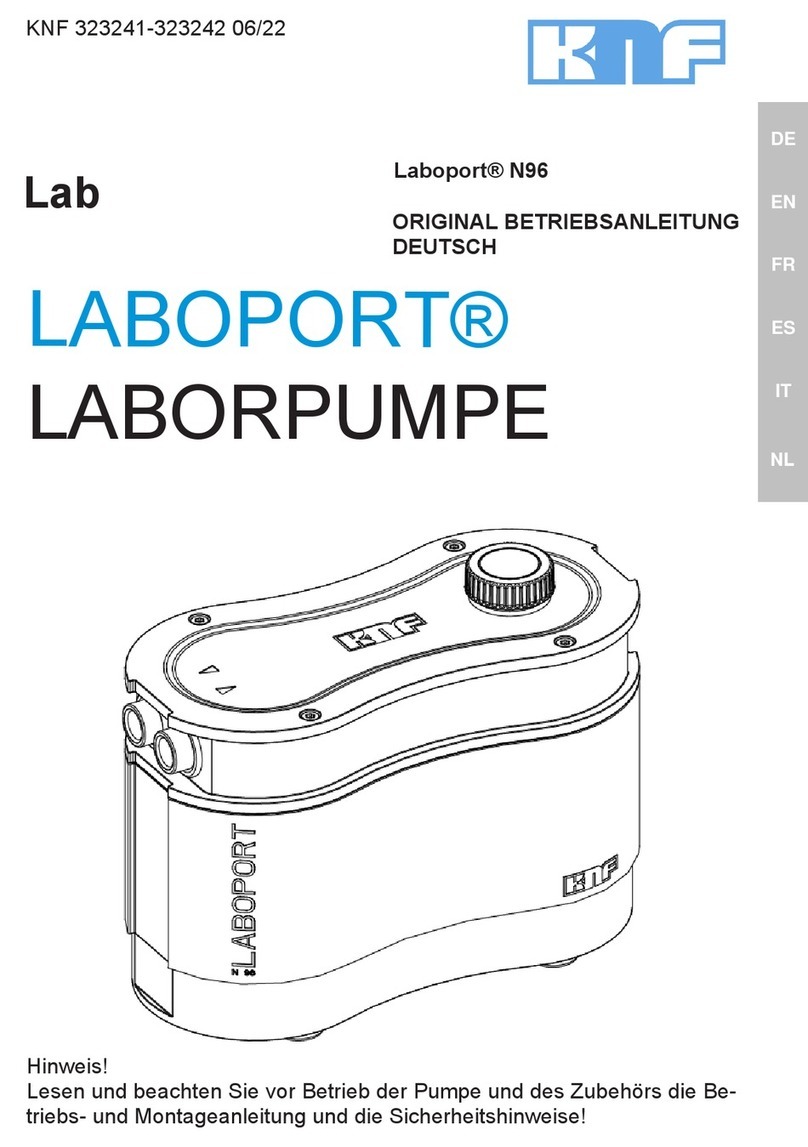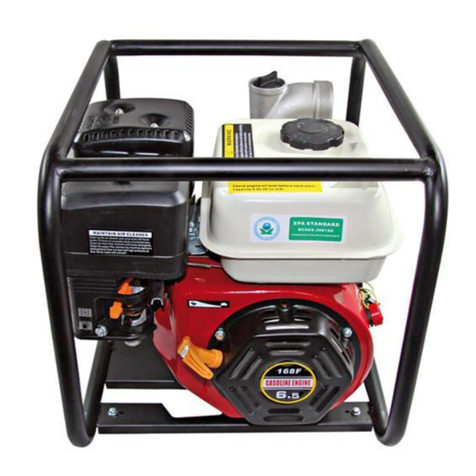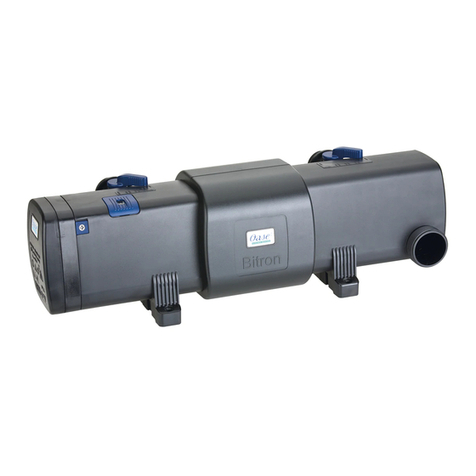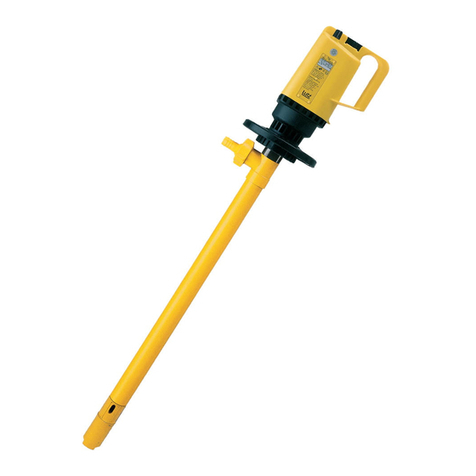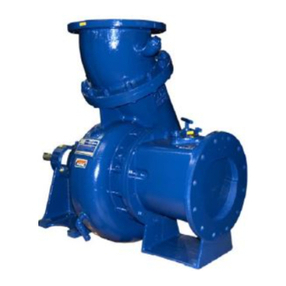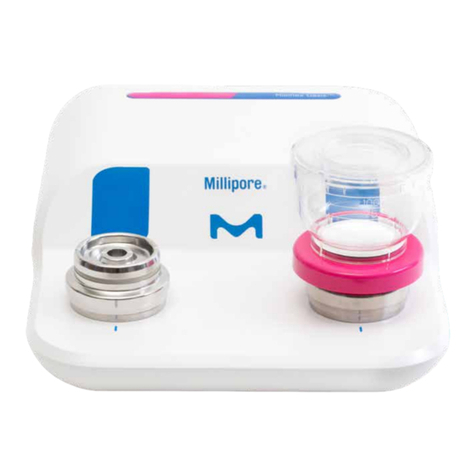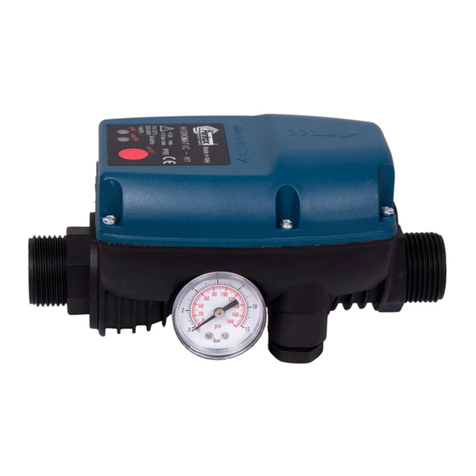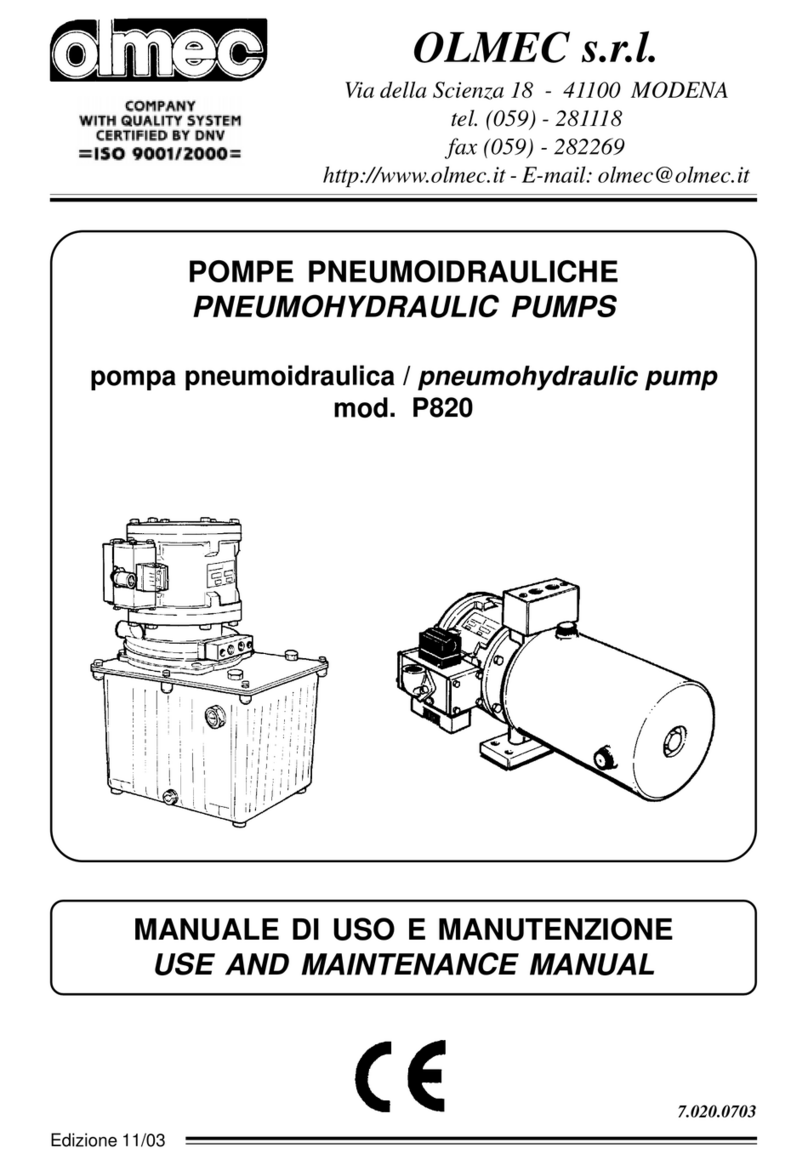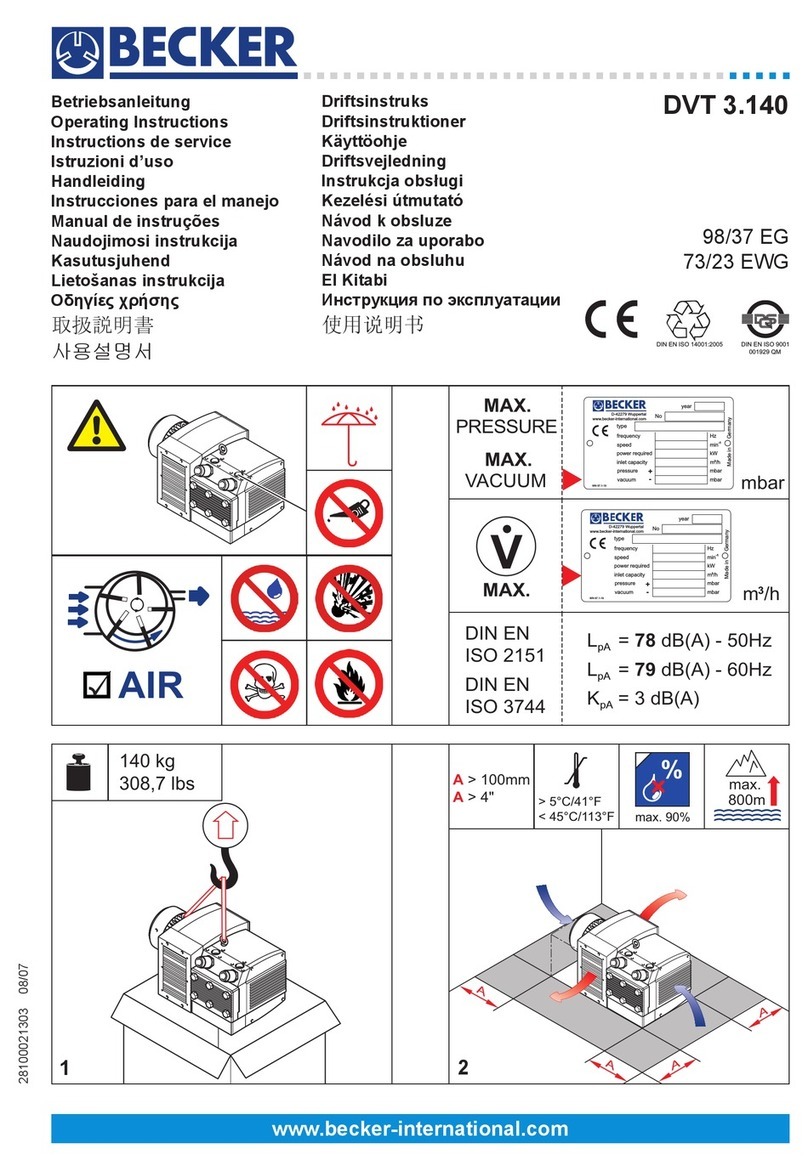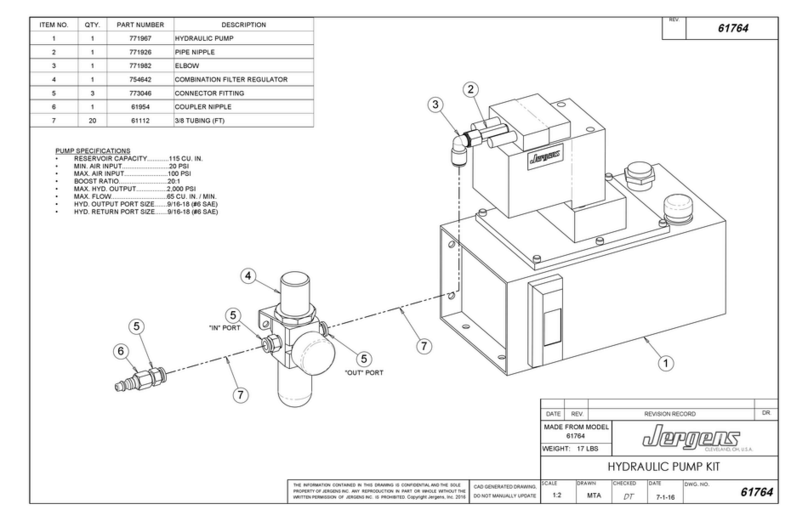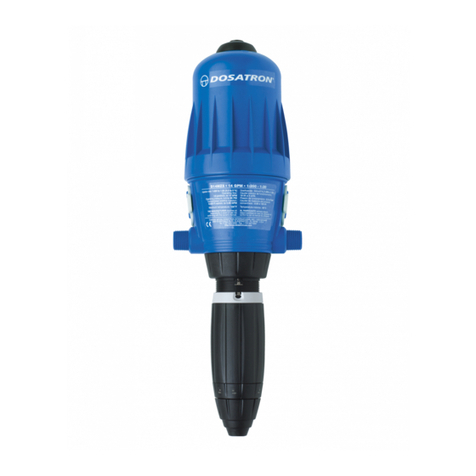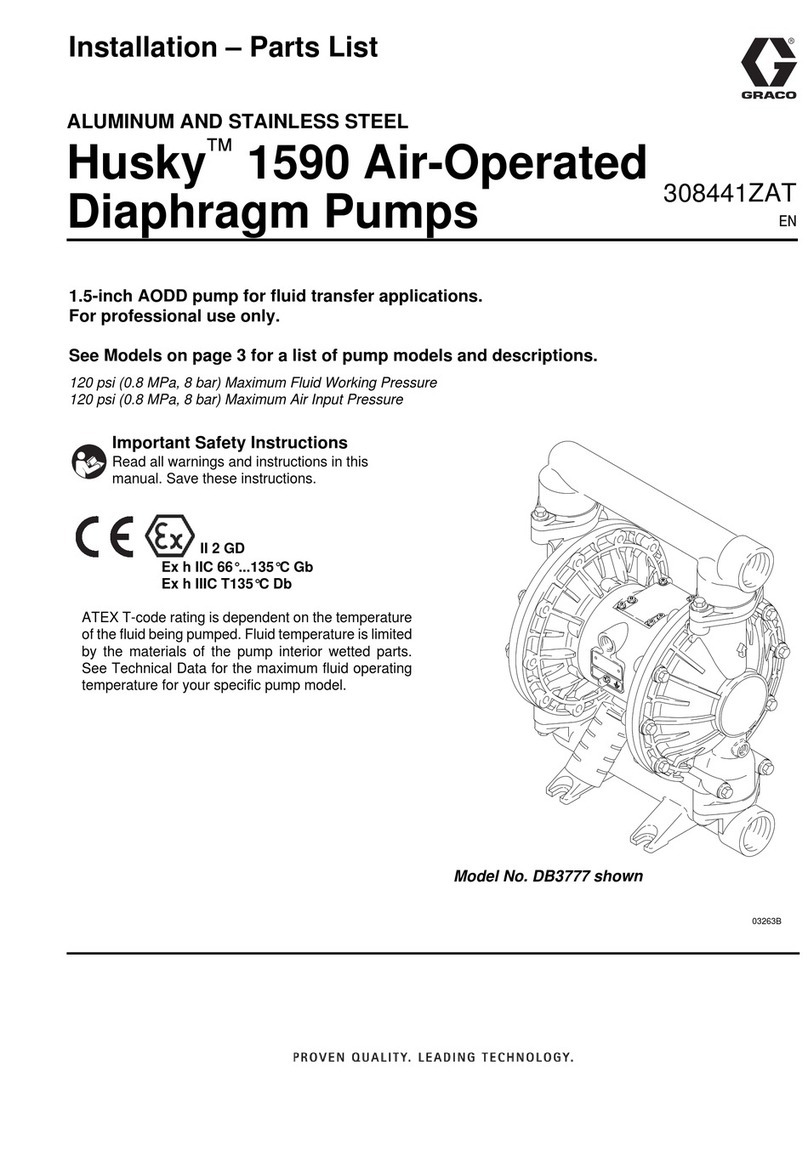
P36512w REV 07/20 3 of 6
Product Labeling Symbols
YWARNING
ON (Power)
OFF (Power)
Direction of Pressure Control
(Valves)
How to Use the High Output
Vacuum/Pressure Pump
The Vacuum/Pressure Pump is shipped ready for
use. See the Specifications section for required
operating conditions.
CAUTION: The pump is rated for indoor use only.
CAUTION: Be sure available power matches unit
requirements. A grounded three-conductor AC
electrical source is required. Units are available for
115 V~ 60 Hz, 100 V~ 50/60 Hz, or 230 V~ 50 Hz.
See the Specifications section for details of electrical
supply options available.
1. Unpack the unit and retain all packing material until
you verify proper product operation.
2. The unit rests on four vibration isolator pads. Place
the unit on a suitable surface, such as a bench,
desk, or table. Be sure not to block the ventilation
holes located on the motor housing.
3. Select appropriately-sized tubing, according to your
application. Use approximately 1⁄4in. I.D. tubing to
withstand the anticipated pressure or vacuum.
CAUTION: During vacuum filtration, use the
supplied Millex®-FA50 hydrophobic vent filter,
to prevent excessive amounts of liquids or mist
from entering the pump (Figure 1). For maximum
protection, use a vacuum-flask water trap
(Figure 2).
4. Prepare the necessary equipment or filter holder and
connect the tubing to the equipment. Do not connect
the tubing to the pump.
5. Plug the power cord into an appropriate
electrical source.
CAUTION: Do not turn the pump on with
equipment or filter holder already attached.
If the pump is inadvertently turned on with the
tubing fully connected and it does not run, turn
off the pump and disconnect the tubing. Restart the
pump and then reconnect the tubing. If the pump’s
thermal overload switch automatically shuts off the
motor, disconnect the tubing and allow the pump
to cool for at least 10 minutes before restarting.
Reconnect the tubing only after the pump
is operating.
6. Turn on the pump, using the toggle switch located
at the rear of the pump.
7. Connect the tubing from the filter holder or other
equipment to the pump and begin your procedure.
8. If using the pump for vacuum: Adjust
the vacuum by closing the pressure regulator
and opening the vacuum regulator fully (turn
counterclockwise). Slowly tighten down (turn
clockwise) the vacuum regulator until you obtain
the desired vacuum reading on the vacuum gauge.
If using the pump for pressure: Adjust
the pressure by turning the vacuum regulator
down fully and opening the pressure fully (turn
counterclockwise). Slowly tighten down (clockwise)
the pressure regulator until you obtain the desired
pressure reading on the pressure gauge.
9. Turn off the pump when you are finished.
Disconnect the tubing first from the pump and then
from the filter holder or other equipment.
Maintenance
Under normal operating conditions, and using
proper handling procedures, the high-output
vacuum/pressure pump should provide many hours
of trouble-free operation.
The dry vacuum/pressure pumps are 100% oil-free.
The pump employs a non-lube piston and cylinder. No
maintenance is necessary for the bearings. All bearings
are sealed and permanently lubricated. Lubrication
should not be attempted. The units are built for
continuous duty operation with quietness
and durability.
CAUTION: Do not lubricate any of the parts with
oil, grease, or petroleum products. Do not clean with
acids, caustics, or chlorinated solvents. Do not replace
the connecting rod or motor bearings.
Disconnect the pump from power before
performing any maintenance.








